Drones have played a significant role in the Ukraine War, both for reconnaissance and attack purposes. Overall, the role of drones in the Ukraine War has been significant. They have helped Ukrainian forces to gain a tactical advantage over Russian forces, and they have shown that drones are a powerful new tool that will likely play an even greater role in future conflicts.
Drones have been used to provide valuable intelligence to Ukrainian forces, helping them to track Russian troop movements, identify targets, and direct artillery fire. This has been especially important in the Donbas region, where the fighting has been intense and the terrain has been difficult to navigate.
Drones have also been used to carry out direct attacks on Russian forces. These attacks have been carried out with both small, commercial drones that have been modified to carry explosives, and larger, military-grade drones. The use of drones for attack purposes has been particularly effective in disrupting Russian supply lines and targeting command and control centres.
Ukrainian Drone Attacks inside Russia
The drone attacks inside Russia have been a significant escalation in the Ukraine War. It is not clear who was responsible for those attacks, but they have been blamed on Ukraine. Ukraine has not claimed responsibility for the attacks, but it has not denied them either. The drone attacks in 2023 have been a continuation of the trend of drone attacks inside Russia that began in 2022. But they have shown that Ukraine is willing to target Russian territory, and they have raised the possibility of a wider conflict between Russia and NATO. The number of drone attacks inside Russia is relatively small. However, the attacks have caused significant damage and have raised the stakes in the Ukraine War.
There have been several drone attacks on Moscow by Ukraine since the start of the war. In May 2023, two drones were shot down over the Kremlin, and in July 2023, a drone attack was carried out on Sheremetyevo International Airport. These attacks have caused some damage, but no injuries have been reported.


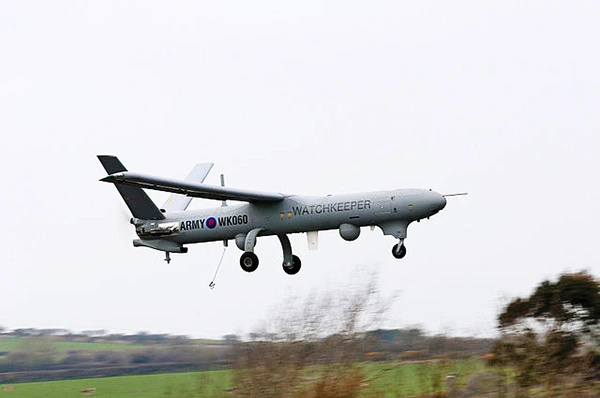

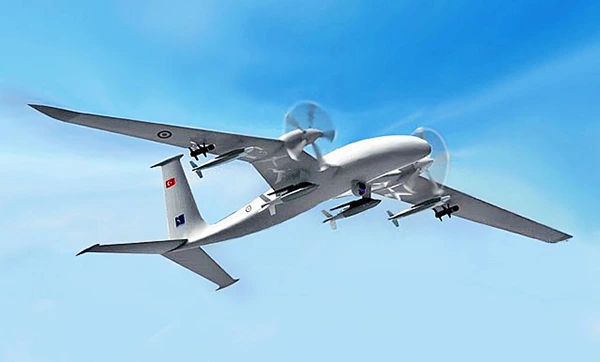

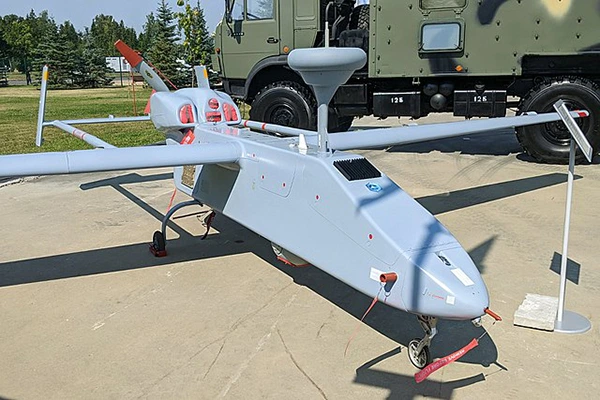

Drones Employed by Ukraine
Ukraine has used a variety of drones in the war, including commercial drones, such as the DJI Mavic 3 and the DJI Matrice 300, for reconnaissance and attack purposes. These drones are relatively inexpensive and easy to operate, making them a valuable asset for Ukrainian forces.
Ukraine has also received a number of military-grade drones from its allies, including the Turkish Bayraktar TB2 and the American Switchblade kamikaze drone. These drones are more expensive and sophisticated than commercial drones, but they offer greater range, payload, and endurance.
Bayraktar TB2 drones have been used to great effect against Russian forces.
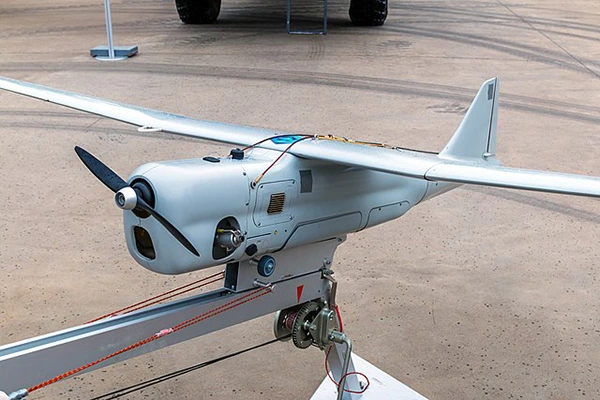

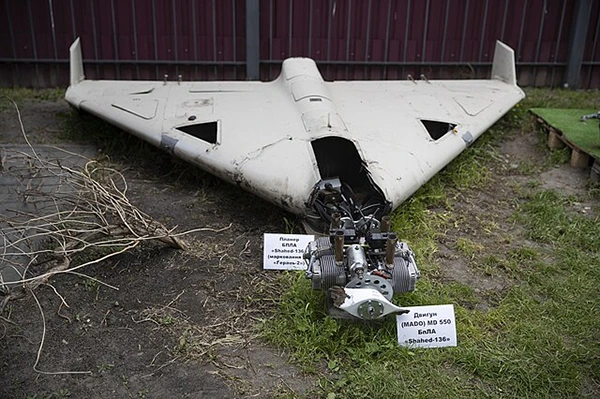

The United States has provided Ukraine with a number of Switchblade kamikaze drones, which are designed to loiter over a target before exploding.
The United Kingdom has provided Ukraine with a number of Watchkeeper WK450 drones, which are used for reconnaissance and surveillance.
Poland has provided Ukraine with a number of Warmate kamikaze drones, which are similar to the Switchblade.
Turkish Drones for Ukraine
Turkey has supplied Ukraine with two types of drones. The Bayraktar TB2, a medium-altitude long-endurance (MALE) unmanned combat aerial vehicle (UCAV). And the Akinci, a high-altitude long-endurance (HALE) UCAV. Turkey has also provided Ukraine with training on how to operate them.
The Bayraktar TB2 has been credited with destroying a number of Russian tanks, artillery pieces, and other military equipment. The Akinci is still under development, but is expected to be even more capable than the Bayraktar TB2.
According to Ukrainian Defense Minister Oleksii Reznikov, Ukraine has received 50 Bayraktar TB2 drones from Turkey since the Russian invasion began in February 2022. It is not clear how many Akinci drones Ukraine has received. The Turkish drones have been a valuable asset to Ukraine, and have helped to level the playing field against Russia. However, they are not a silver bullet, and Ukraine will need more military aid if it is to defeat Russia.
The Bayraktar TB2 can fly for long periods of time at altitudes of up to 27,000 feet. It is equipped with a variety of sensors, including a synthetic aperture radar (SAR) and a laser designator, which allow it to target enemy forces with precision.
The Akinci is a high-altitude long-endurance (HALE) UCAV, which means that it can fly for even longer periods of time at altitudes of up to 40,000 feet. It is equipped with even more advanced sensors than the Bayraktar TB2, and is capable of carrying a heavier payload.
Employment of Drones by Russia
The Russian military has used combat drones in a variety of ways in the Ukraine War, including reconnaissance, attack and jamming.
Russian drones have been used to provide valuable intelligence to Russian forces, helping them to track Ukrainian troop movements, identify targets, and direct artillery fire.
Russian drones attacks on Ukrainian forces have been carried out with both small, commercial drones that have been modified to carry explosives, and larger, military-grade drones. The use of drones for attack purposes has been particularly effective in disrupting Ukrainian supply lines and targeting command and control centers.
Russian drones have also been used to jam Ukrainian communications and radar systems. This has made it more difficult for Ukrainian forces to coordinate their operations and defend themselves against Russian attacks.
The Russian military has also used drones to deliver supplies to its troops and to evacuate wounded soldiers.
However, the Russian military has also suffered some losses to its drone fleet. Ukrainian forces have shot down a number of Russian drones, and they have also used electronic warfare to disrupt Russian drone operations.
In recent months, the number of Russian drone attacks in Ukraine has decreased. This is likely due to a number of factors, including the increasing effectiveness of Ukrainian air defenses and the increasing difficulty of operating drones in the face of electronic warfare.
Russian Drones
Russia has used a variety of drones in the Ukraine war, including including Orlan-10, Forpost, Zala Aero, and Kamikaze drones. March 2022, Ukrainian forces claimed to have shot down over 100 Russian drones.
Orlan-10 is a small, fixed-wing drone that is used for reconnaissance and surveillance. It has a range of up to 120 kilometers and can carry a payload of up to 5 kilograms.
Forpost is a medium-altitude long-endurance (MALE) drone that is used for reconnaissance, surveillance, and targeting. It has a range of up to 250 kilometers and can carry a payload of up to 200 kilograms.
ZALA Aero is a family of small, fixed-wing drones that are used for reconnaissance, surveillance, and targeting. They have a range of up to 30 kilometers and can carry a payload of up to 5 kilograms.
Kamikaze drones are small, disposable drones that are used for suicide attacks. They are equipped with explosives and are programmed to fly into their targets.
The Russians have also used Iranian-made drones in the Ukraine war, including the Shahed-136 and the Shahed-186. These drones are small, cheap, and easy to operate, making them ideal for use in a war zone.
Iranians Drones for Russia
Amongst the drones supplied by Iran, which have been used by the Russians in the Ukraine war are Shaed-129, -136, -191 and Mohaje-6.
Shahed-129 is a long-range, medium-altitude, reconnaissance and strike drone. It has a range of over 2,000 kilometers and can carry a payload of up to 80 kilograms.
Shahed-191 is a medium-range, medium-altitude, attack drone. It has a range of over 1,500 kilometers and can carry a payload of up to 60 kilograms.
Mohaje-6 is a short-range, low-altitude, reconnaissance and attack drone. It has a range of over 1,000 kilometers and can carry a payload of up to 40 kilograms.
Shahed-136 is a kamikaze drone, also known as a “suicide drone.” It is a small, disposable drone that is used to carry out a single, destructive strike.
Performance of Russian Drones
The performance of Russian drones in the Ukraine war has been mixed. Some drones, such as the Orlan-10, have been used effectively for reconnaissance and surveillance. However, other drones, such as the Forpost, have been more vulnerable to Ukrainian air defenses.
There are a number of reasons why Russian drones have not been as effective as they could have been. First, Russian drones are not as advanced as some of the drones used by Ukraine, such as the Bayraktar TB2. Second, Russian drones are not as well-protected from enemy air defenses. Third, Russian forces have not been as effective at using drones in coordination with other weapons systems.
Despite these challenges, Russian drones have still played a significant role in the war. They have been used to target Ukrainian forces, to gather intelligence, and to coordinate artillery strikes.
Some of the key factors that have contributed to the mixed performance of Russian drones in the Ukraine war are lack of advanced technology, vulnerability to air defences and ineffective use:
Russian drones are not as advanced as some of the drones used by Ukraine, such as the Bayraktar TB2. This means that they are less capable of carrying out complex missions and are more vulnerable to enemy air defenses.
Russian drones are not as well-protected from enemy air defenses as some of the drones used by Ukraine. This means that they are more likely to be shot down by Ukrainian fighters or missiles.
Russian forces have not been as effective at using drones in coordination with other weapons systems. This has limited the effectiveness of drones in the war.
Comments
Overall, drones have played a significant role in the Ukraine war. They have been used by both sides for reconnaissance, surveillance, and targeting. However, Russian drones have been more vulnerable to Ukrainian air defenses than Ukrainian drones.
The use of drones in the Ukraine War has had a number of implications for the future of warfare as force multipliers, for reconnaissance and attack purposes.
==
Drones Used to Attack by Ukraine
Here are some specific examples of how drones have been used in the Ukraine War:
In February 2022, a Ukrainian drone was used to destroy a Russian convoy of 80 tanks and armoured vehicles.
In March 2022, a Ukrainian drone was used to strike a Russian command and control centre, killing several high-ranking Russian officers.
In April 2022, a Ukrainian drone was used to disrupt a Russian supply line, preventing the delivery of food and ammunition to Russian forces.
Drone Attached Carried Out Inside Russia
No fatal injuries were reported in the following attacks.
May 25, 2022: A drone attack targeted the Kremlin in Moscow. The attack caused some damage to the building.
June 5, 2022: A drone attack targeted an oil refinery in Bryansk, Russia. The attack caused a fire at the refinery.
June 17, 2022: A drone attack targeted a military base in Kursk, Russia. The attack caused some damage to the base.
July 1, 2022: A drone attack targeted a military airfield in Rostov-on-Don, Russia. The attack caused some damage to the airfield.
February 22, 2023: A drone attack targeted a military base in Shebekino, Russia. The attack caused some damage to the base.
March 4, 2023: A drone attack targeted a substation of the Transneft-Druzhba oil pipeline in Belgorod Oblast, Russia. The attack caused a power outage in the region.
May 25, 2022: Two drones were shot down over the Kremlin. The attacks caused some damage to the building.
May 30, 2023: A drone attack targeted the Kremlin in Moscow. The attack caused some damage to the building.
June 1, 2023: A drone attack targeted a military base in Kursk, Russia. The attack caused some damage to the base.
July 4, 2023: A drone attack targeted Sheremetyevo International Airport in Moscow. The attack caused some damage to the airport.
==
Key Advantages of Turkish Bayraktar TB2 and Akinci Drones
Relatively inexpensive, making them a cost-effective way to target enemy forces.
Easy to operate, making them suitable for use by even inexperienced pilots.
Long range and endurance, allowing them to operate deep behind enemy lines.
Equipped with advanced sensors, allowing them to target enemy forces with precision.
Limitations of Bayraktar TB2 and Akinci Drones
Vulnerable to air defense systems, and can be shot down by enemy fighters or missiles.
Not stealthy, making them easy to detect by enemy radar.
Can only carry a limited payload, meaning that they cannot carry large or heavy weapons.
==
Russian Drone Attacks
Here are some examples of Russian drone attacks in Ukraine in 2022 and 2023:
February 24, 2022: Russian drones were used to attack Ukrainian military bases and airfields on the first day of the invasion.
March 8, 2022: Russian drones were used to attack a maternity hospital in Mariupol, Ukraine. The attack killed three people and injured dozens more.
April 16, 2022: Russian drones were used to attack a train station in Kramatorsk, Ukraine. The attack killed at least 50 people and injured dozens more.
May 9, 2022: Russian drones were used to attack a military parade in Lviv, Ukraine. The attack killed at least 20 people and injured dozens more.
June 1, 2023: Russian drones were used to attack a military base in Kharkiv, Ukraine. The attack killed at least 10 people and injured dozens more.

















